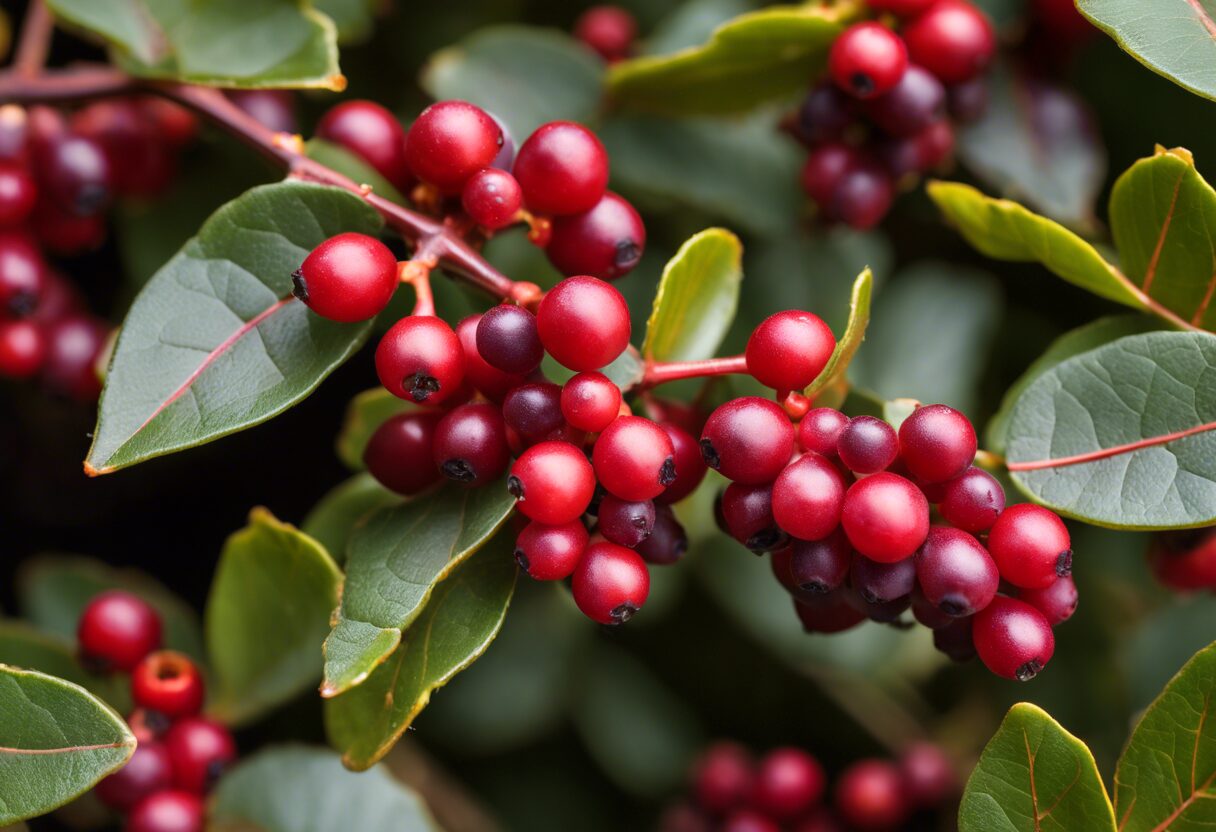Ever felt that your garden needs a dash of exotic charm? Well, you’re in luck! Enter the world of Growing and Caring for Berberis Wilsoniae ‘Ace’. This vibrant beauty is like a breath of fresh air with its stunning foliage that can transform any dull corner into an enchanting oasis.
But wait, don’t let its exotic charm intimidate you! The best part is, it’s quite low maintenance. So even if you aren’t exactly blessed with a green thumb, this plant won’t hold it against you. Time to roll up your sleeves and get ready for some gardening fun! Keep reading about Growing and Caring for Berberis Wilsoniae ‘Ace’.
Key Takeaways
- Berberis Wilsoniae ‘Ace’ is a hardy, compact shrub that requires full sun to partial shade and well-drained soil.
- It’s best to plant it in early spring or fall.
- Regular pruning helps maintain its shape and promotes new growth.
- Watering should be moderate, allowing the soil to dry between watering sessions.
- Fertilize annually with a slow-release, balanced fertilizer.
- It’s resistant to most pests and diseases but watch out for powdery mildew and root rot.

What is Berberis Wilsoniae ‘Ace’?
Well, let me tell you about the Berberis Wilsoniae ‘Ace’. It’s a lovely ornamental shrub that can add a pop of color to any garden. This deciduous shrub is one of the many barberry species that garden enthusiasts love.
Origin and Description
The origin of Berberis Wilsoniae ‘Ace’ traces back to China. It’s a native plant there, but it has made its way into gardens worldwide. The physical description? Well, it’s quite a sight!
This plant stands proud with a height of around 1-2 meters. Its leaves are an eye-catching mix of green and red, creating a beautiful contrast against its yellow flowers.
Unique Characteristics
Now, what sets the Berberis Wilsoniae ‘Ace’ apart from other plants? Its unique features are something to behold! This plant isn’t just your average barberry.
One distinctive trait is its autumn color transformation. As the seasons change, so does this plant’s leaf color – from green-red in summer to fiery orange-red in autumn. Talk about putting on a show!
Another special characteristic is its resistance to most pests and diseases. This makes it an excellent choice for those who want low-maintenance but high-impact garden plants. Compared to other barberries, it’s like the superhero of the bunch!
Growing Berberis Wilsoniae ‘Ace’: A Green Thumb’s Guide


When it comes to Growing and Caring for Berberis Wilsoniae ‘Ace’, there are a few key factors to keep in mind. Let’s dig into them, shall we?
The Dirt on Soil Conditions
Berberis Wilsoniae ‘Ace’ loves well-drained, nutrient-rich soil. You’ll want to aim for a pH level between 6.0 and 7.5 – slightly acidic to neutral. So, get your hands dirty and prepare the perfect home for your Berberis.
Sunlight and Temperature: The Goldilocks Zone
This plant enjoys full sun or partial shade, so no need for any sunblock here! As for temperature, Berberis Wilsoniae ‘Ace’ can handle a chill but prefers a temperate climate. So, if you’re living somewhere with extreme heat or cold, you might want to reconsider.
Watering: Not Too Much, Not Too Little
When it comes to watering your Berberis Wilsoniae ‘Ace’, think of Goldilocks again – not too much, not too little, just right! Keep the soil moist but avoid waterlogging it. Remember folks; these plants aren’t fond of swimming!
Propagation: Multiply Your Green Family
There are several ways to propagate this plant species successfully. From seed propagation to cuttings or root division methods, there’s something for every green thumb out there! Heck, even layering could work if you’re feeling adventurous with your Berberis cultivation efforts!



How to Care for Berberis Wilsoniae ‘Ace’?
When it comes to maintaining Berberis Wilsoniae ‘Ace’, there’s a bit of an art and science involved. It’s not just about watering and hoping for the best, but also about pruning, fertilizing, and managing pests and diseases. So let’s dive into the nitty-gritty of caring for Berberis Wilsoniae ‘Ace’.
Pruning Techniques
Pruning your Berberis Wilsoniae ‘Ace’ isn’t as scary as it sounds. The best time to prune is in late winter or early spring before new growth starts. This helps keep the plant healthy and encourages more vibrant blooms.
You don’t need any fancy tools either. A pair of sharp secateurs will do the trick. Just remember, less is more when it comes to pruning, so don’t go too wild!
Fertilizer Recommendations
Fertilizing your Berberis Wilsoniae ‘Ace’ can be a game-changer for its health and growth. A slow-release granular fertilizer is usually your best bet here.
Apply it in early spring before new growth begins, then again in mid-summer to give it a little boost. Remember, over-fertilizing can do more harm than good, so stick to the recommended amounts.
Pest and Disease Management
Even with all your love and care, pests and diseases might still find their way to your beloved Berberis Wilsoniae ‘Ace’. Common culprits include aphids and powdery mildew.
Prevention is always better than cure! Regularly check your plant for signs of these nasties. If you spot them early enough, a simple insecticidal soap or fungicide should do the trick.
Common Problems in Growing and Caring for Berberis Wilsoniae ‘Ace’
Like any plant, Growing and Caring for Berberis Wilsoniae ‘Ace’ can have its fair share of hiccups. We’re talking about diseases and pesky pests that just love to make a meal out of your beloved shrub. But don’t fret! We’ve got the lowdown on these common Berberis care issues and growing Berberis challenges.
Identifying Common Diseases
First off, let’s talk about diseases. The most common ones affecting our dear friend, the Berberis Wilsoniae ‘Ace’, are rust and powdery mildew. Rust shows up as orange spots on the leaves, while powdery mildew looks like someone dusted your plant with flour.
Now, if you see black spots or yellowing leaves, you might be dealing with a case of black spot disease or leaf spot. These are some of the more common symptoms of Berberis diseases. It’s all about keeping an eye out for these signs when it comes to disease identification in plants.
Managing Pest Infestations
Moving on to pests. Aphids, scale insects, and vine weevils are notorious for causing trouble in the world of Berberis Wilsoniae ‘Ace’. If you see small bugs crawling around or notice some damage to the leaves or stems, chances are you’ve got yourself a pest problem.
But don’t panic! There are ways to prevent these infestations from happening in the first place. Regularly checking your plant for signs of pests is key here. And if they do show up? Well, there’s always insecticidal soap or neem oil treatments that can help manage these critters.
Remember folks, prevention is better than cure when it comes to managing pests in Berberis. So, keep an eye out, and your plant will thank you for it!


To Wrap Up
So, you’ve now got the lowdown on Growing and Caring for Berberis Wilsoniae ‘Ace’. It’s like being a plant parent, right? Just remember, these beauties need their sunlight like a beach bum needs the sea.
And don’t forget about that well-drained soil – it’s as crucial as your morning coffee. So go ahead, give it a shot! Your garden will thank you with some stunning color pops!


